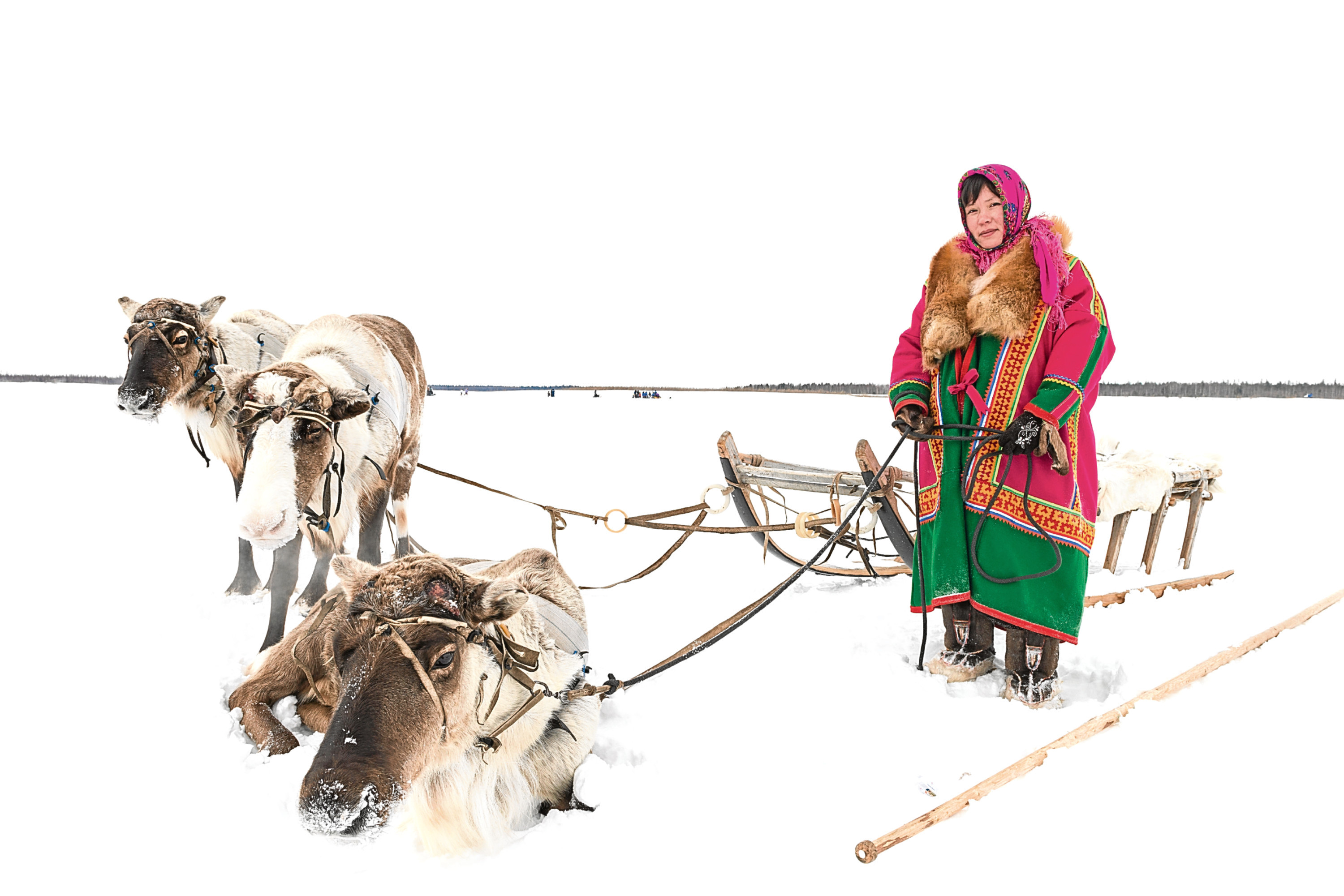
AS one of the world’s most-spectacular sights, it’s a pity so few people get to see it.
When the Nenets people herd their reindeer, and prepare them for the cold months ahead and maybe some hard work for Santa, it’s a riot of noise and colour.
Also known as Samoyeds, the Nenets are an indigenous people in Northern Arctic Russia, and the most-recent census reckoned they number about 45,000.
Most live in the Autonomous Okrugs of Yamalo and Nenets, and speak two varieties of Nenets, Tundra or Forest.
The name Samoyeds translates as self-eater, which seems to have been a derogatory name, and they prefer being described as Nenets, or “Men”.
The Nenets, of all ages, take part in the mammoth task of moving countless reindeer from one part of their northern wastelands to another.
In the morning, the herders get the deer running around, then select 40 or so to lasso and attach to their sledges.
Their dogs play a big part, just as with any Western farmer and his sheep — the reindeer often manage to escape, and it’s up to the dogs to round them up again.
As the Nenets will be moving lock, stock and barrel, along with the deer, all their earthly belongings are packed onto the sledges, with entire communities moving at the same time.
They are on the hunt for fresh grass and moss for all their reindeer.
When they stop for the night, or when the blizzards get too bad, they put up their tents, which are very similar to Native Americans’ tepees, and like them, they also have a chief and a hierarchy.
When they sit down to eat, those reindeer again play a major part — the people eat them as the main part of their diet, and leave nothing to waste, taking the meat raw and the blood, too!
Many Nenets now live in modern cities, and the younger ones speak Russian.
The older generation speak Nenets, but as their numbers decrease, UNESCO has classified it as an endangered language.
READ MORE

Enjoy the convenience of having The Sunday Post delivered as a digital ePaper straight to your smartphone, tablet or computer.
Subscribe for only £5.49 a month and enjoy all the benefits of the printed paper as a digital replica.
Subscribe